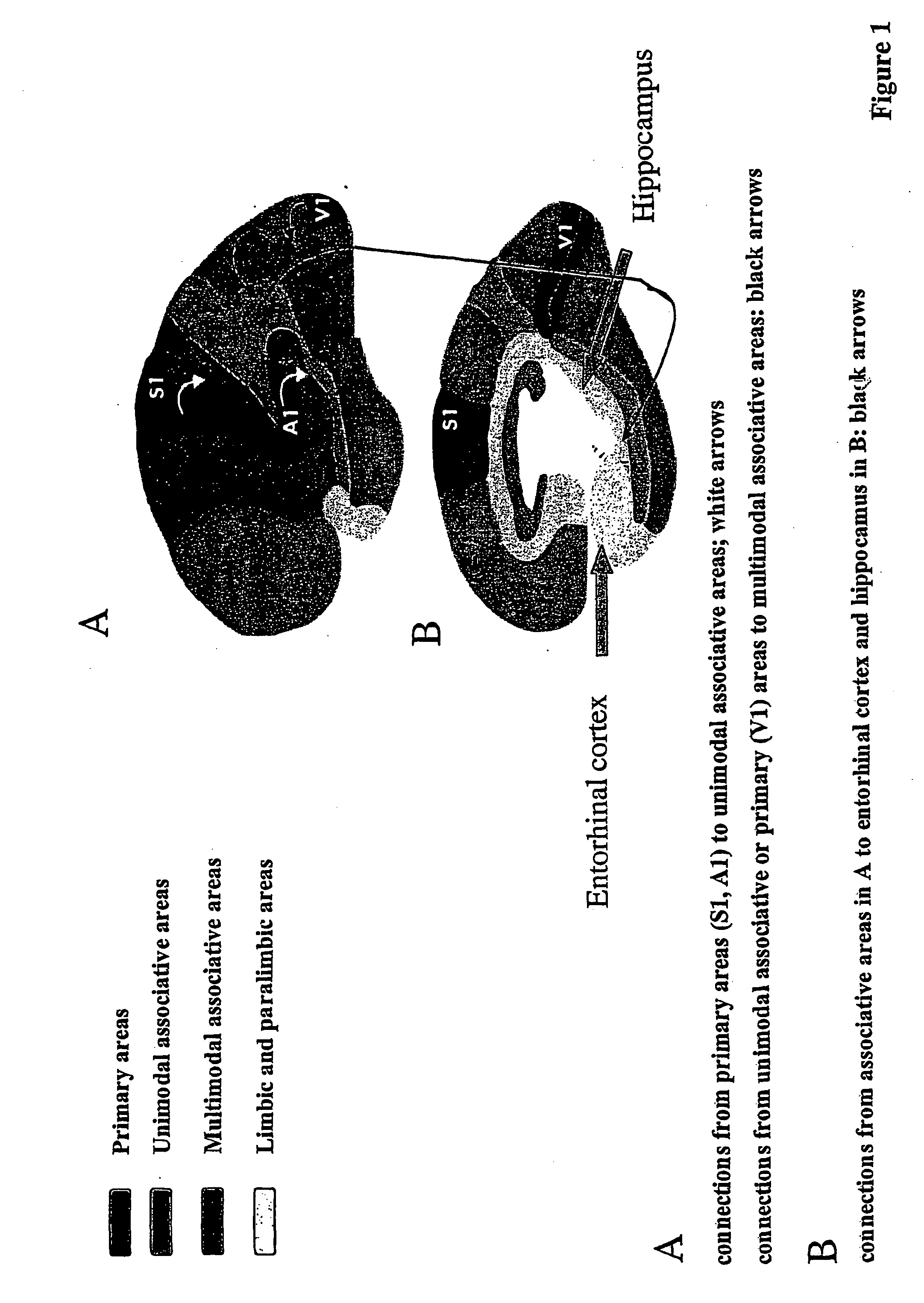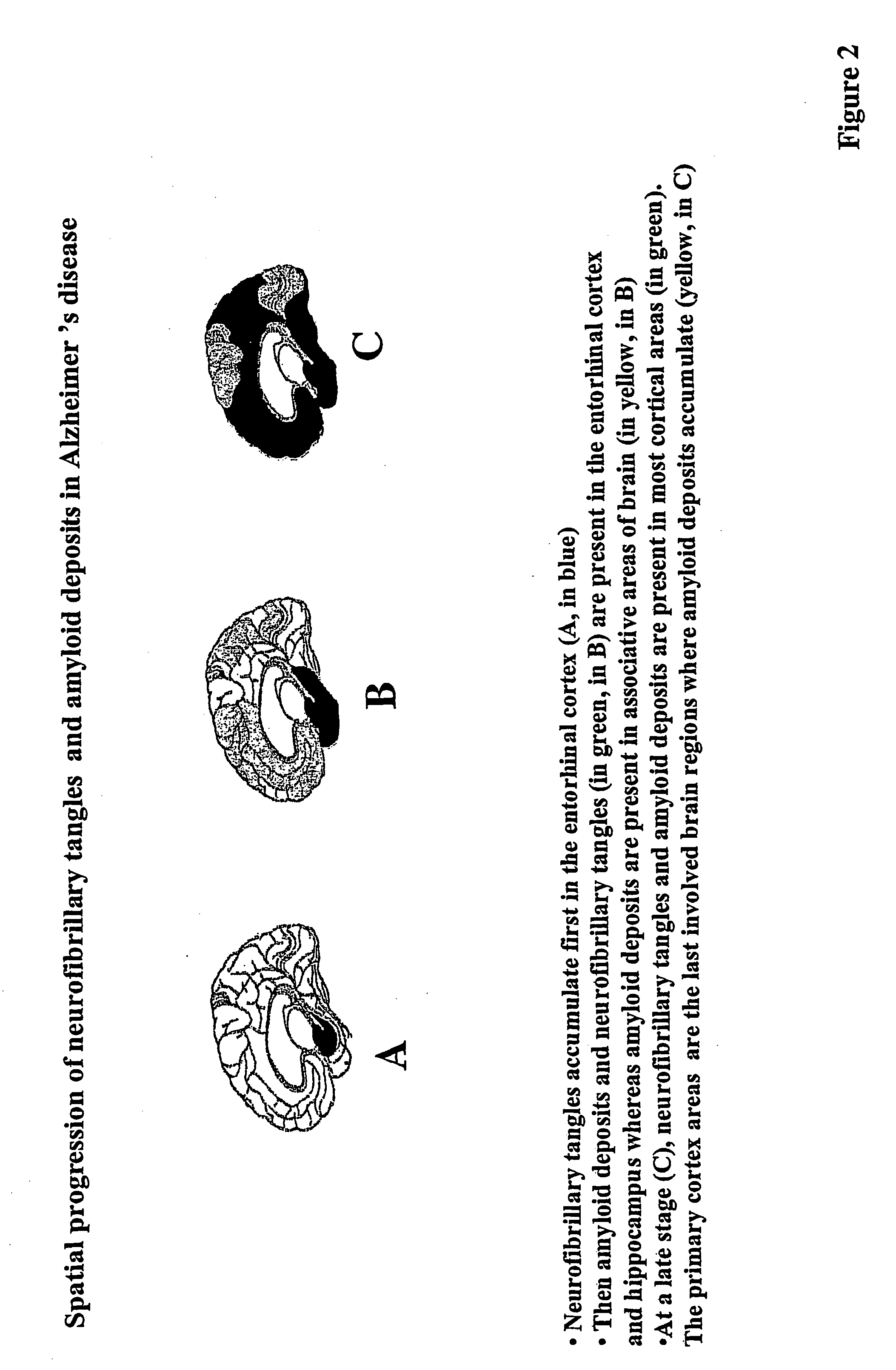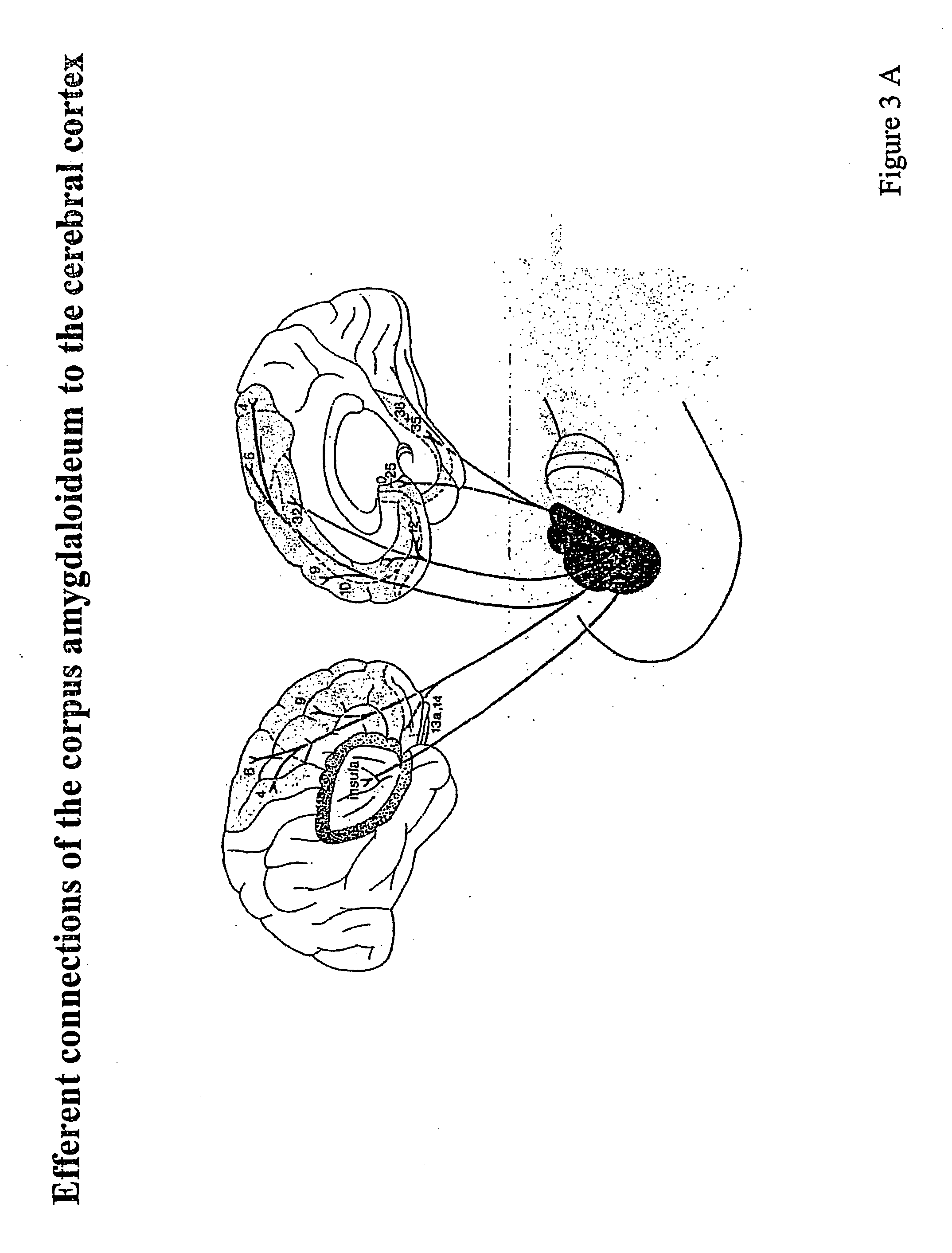Methods of administering vectors to synaptically connected neurons
a technology of synaptically connected neurons and vectors, applied in the direction of biocide, animal repellents, peptide/protein ingredients, etc., can solve the problems of inadequate treatment, little success of researchers in delivering viral vectors to the brain using aav vectors, and insufficient delivery of cells
- Summary
- Abstract
- Description
- Claims
- Application Information
AI Technical Summary
Benefits of technology
Problems solved by technology
Method used
Image
Examples
example 1
Construction and Production of AAV-hALD
[0193] A recombinant AAV vector (PGK-hALD-AAV) was engineered to contain the human ALD cDNA (hALD) (Mosser et al., Nature, 361:726-730, 1993) under the control of the mouse phosphoglycerate kinase (PGK) promoter. The PGK-hALD cassette was obtained from the M48-ALD vector (Cartier et al., Proc. Natl. Acad. Sci. USA, 92:1674-8, 1995) and inserted upstream the SV40 polyadenylation site between the two ITR of pSUB201 deleted for rep and cap sequences (Samulski et al., J. Virol., 63:3822-8, 1989). AAV vector stocks were prepared and titered as previously described (Salvetti et al, Hum Gene Ther., 9:695-706, 1998). The vector preparation contained 1.7*109 infectious particles / ml.
[0194] The entire cassette was flanked by AAV inverted terminal repeats (ITRs) that are required for gene expression, replication, and packaging into viral particles. Recombinant AAV virions were produced in human 293 cells (readily available through, e.g., the American Typ...
example 2
In Vivo Delivery of AAV-HALD
[0195] ALD deficient mice were originally obtained from Dr. K. Smith (Baltimore, Md., USA) (Lu et al., Proc. Natl. Acad. Sci., U.S.A., 94:9366-9371, 1997).
[0196] ALD newborn mice were anesthetized on ice. A small burr hole was drilled in the skull with a 26-G needle and a glass micropipette was introduced into the subventricular zone of the left lateral ventricle (AB). Adult mice were anesthetized by intraperitoneal administration of a mixture of ketamine (Panpharma, Luitre-Fougeres, France) / xylazine (Sigma, St Quentin-Fallavier, France) (0.1 / 0.01 mg / g body weight). The anesthetized mice were mounted onto a stereotaxic frame (David Kopf Instruments, Tujunga, Calif.). The skull was exposed and holes were drilled bilaterally for infusion in the corpus callosum (1.1 mm rostral and 1.3 mm lateral to bregma, depth 2 mm) and pons (4.6 mm caudal and 1 mm lateral to bregma, depth 4.25 mm) according to the atlas of Franklin and Paxinos (AC). PGK-hALD-AAV vector ...
example 3
Analysis of hALD Expression
[0197] After deeply anesthetized animals were sacrificed, brain, cerebellum and spinal cord were removed, frozen into isopentane and stored at −70° C. until analysis. Serial sections (4 mm thick) of brain, cerebellum and spinal cord were cut at −17° C. using a cryostat, fixed in 4% formaldehyde for 15 min and permeabilized in PBS-Triton X-100, 0.1%. Sections were washed three times in PBS for 5 min and incubated with the first antibody at 37° C. or at room temperature for 30 minutes. Immunohistochemical analysis of human ALDP was performed using a rabbit polyclonal or mouse monoclonal anti-hALDP antibody that does not crossreact with mouse ALDP (Franklin K B J; Paxinos G., 1997. The mouse brain: in stereotaxic coordinates. San Diego: Academic Press; and Fouquet et al, Neurobiol. Dis., 3:271-285, 1997). ALDP immunostaining gives a characteristic punctuate pattern that reflects the distribution of peroxisomes in the cell body and processes of CNS cells. Per...
PUM
| Property | Measurement | Unit |
|---|---|---|
| Cell death | aaaaa | aaaaa |
| Cell angle | aaaaa | aaaaa |
| Therapeutic | aaaaa | aaaaa |
Abstract
Description
Claims
Application Information
 Login to View More
Login to View More - R&D
- Intellectual Property
- Life Sciences
- Materials
- Tech Scout
- Unparalleled Data Quality
- Higher Quality Content
- 60% Fewer Hallucinations
Browse by: Latest US Patents, China's latest patents, Technical Efficacy Thesaurus, Application Domain, Technology Topic, Popular Technical Reports.
© 2025 PatSnap. All rights reserved.Legal|Privacy policy|Modern Slavery Act Transparency Statement|Sitemap|About US| Contact US: help@patsnap.com



